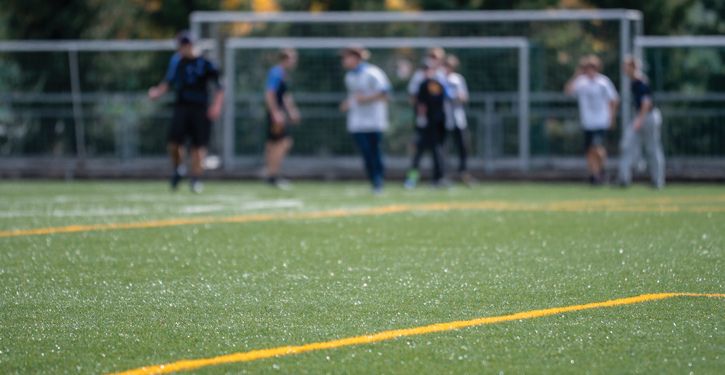Campus recreation facilities are pivotal in promoting physical health and social connections among students. The type of surface used in these facilities can significantly affect both the safety and quality of these experiences. While natural grass has traditionally been the surface of choice, many colleges are turning to artificial turf for its numerous benefits, including safety, durability and ease of maintenance.
Artificial Turf Safety Benefits
One of the most compelling arguments for turf is its consistent safety profile, which offers a stable and uniform surface, unlike natural grass which can become uneven and develop muddy patches, increasing the risk of slips and falls. This consistency is crucial for preventing injuries among student-athletes and intramural participants as safety should be a universal priority.
Moreover, the latest iterations of artificial turf feature improved shock absorbency, which minimizes the impact on athletes’ joints and muscles during play thereby reducing sprains, knee injuries and other joint-related ailments. These considerations are vital in sports that involve extensive running and abrupt stops.
Artificial turf fields provide a reliable playing surface that doesn’t get affected by weather conditions the same way natural grass does. After heavy rain, grass fields can become slippery and hazardous, not to mention the days of closure required for recovery and maintenance to prevent long-term damage. On the other hand, artificial turf is equipped with efficient drainage systems that handle large amounts of water effectively, reducing downtime and maintaining a safer playing environment during adverse weather conditions.
Durability Compared to Natural Grass
In terms of maintenance, artificial turf stands out for its low upkeep requirements compared to natural grass. The latter demands regular watering, mowing, fertilizing and pesticide treatments — all of which add to maintenance costs and can impact the environment. Artificial turf eliminates the need for watering and pesticides and requires less routine maintenance. This not only cuts down on costs but also frees up resources that can be redirected toward other activities and facilities.
The durability of artificial turf means it can endure much higher usage without degrading. Natural grass can bear only so much wear and tear before it needs time to recover — limits that don’t apply to synthetic alternatives. This durability makes artificial turf an excellent option for campuses where fields must accommodate multiple teams and events, ensuring all students have access to high-quality sports facilities.
The debate between natural grass and artificial turf is evolving with safety, cost and environmental considerations at the forefront. For college campuses, the decision to invest in artificial turf can ensure all students — whether training for a varsity match or joining a pickup game of soccer — can enjoy a safe, reliable and low maintenance playing field. It’s about providing equitable recreational opportunities that prioritize the well-being of the entire student body, fostering a healthy, active and connected campus community.
Max Troderman is the senior marketing specialist for Brock USA, where he leverages his expertise to enhance marketing strategies and initiatives. He can be reached at mtroderman@brockusa.com for inquiries related to innovative sports surfacing solutions.










